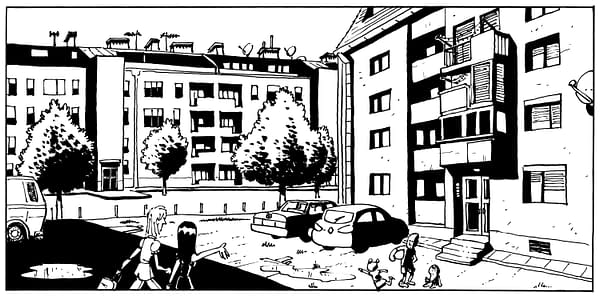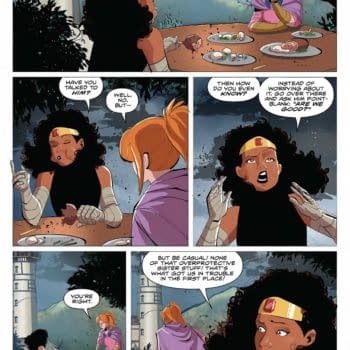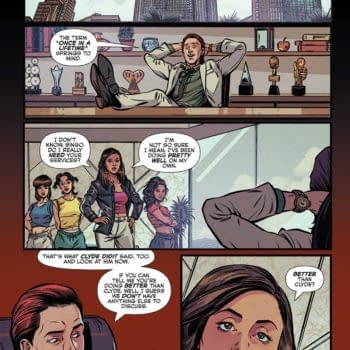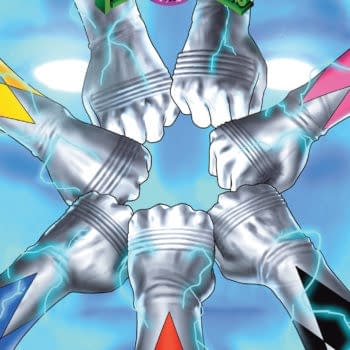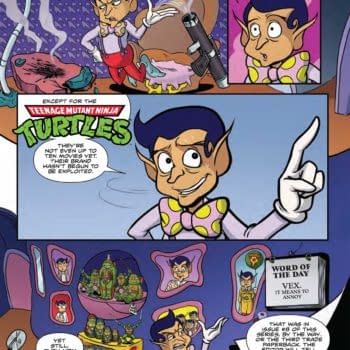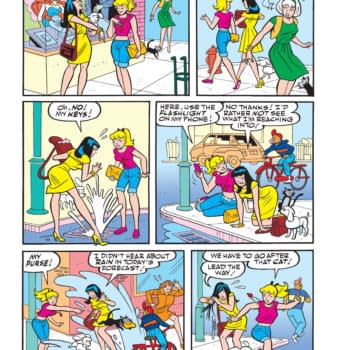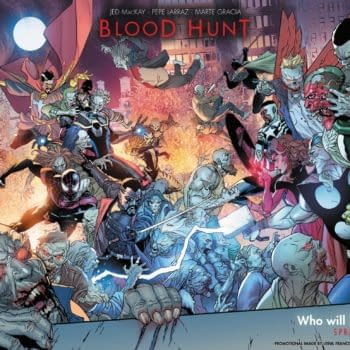Posted in: Comics, Recent Updates | Tagged: Bob Solanovic, Comics, Croatia, entertainment, kickstarter, Montenegro, Silvja Martinovic, Unfinished City
The 'Unfinished' Interview – Exploring A Thriller Set In Croatia And Montenegro
By Emir Pasanovic
Last Friday, 14th March, saw the launch of a new comic book Kickstarter campaign that brought together England, Croatia and Montenegro in new and exciting ways. Three authors with different connections to each of the countries and each other, are now bringing a preview of the Unfinished City to internet audiences hoping to fund their goals and bring the complete story to a bookshelf near you sooner rather than later. Here is a brief introduction to the comic and the main character, Nadja Djurkovic:
Nadja Djurkovic is a British Citizen from Montenegro, travelling home for the first time in a decade. Called by a letter from her sister, Nadja arrives to find that her sister was murdered just two weeks before.
Stricken by grief, Nadja starts to investigate the crime, and quickly discovers all is not as it seems. Her home town has changed; the fall of communism a decade before has been replaced with corruption and organized crime. Everybody knows the murder was pinned on the wrong man – and the true murderer may well be the most powerful man in the city…
I have known a little about this project from the beginning because I follow Robert "Bob" Solanović's work religiously ever since I first met him more than a decade ago. I leapt at the chance to be the first to interview the whole creative team, but unfortunately Silvija Martinović was not available at the moment. Luckily, her co-author and an experienced comic book writer Benjamin Dickson (Slumdroid, "Santa Claus vs the Nazis", "Fight the Power!") and Bob were more than happy to answer my questions and interspersed in the interview, you can view never before seen images from the Unfinished City. I hope you enjoy it.

Emir Pasanovic: Unfinished City has been a long commitment to everyone involved, and to begin with I think it would be great if you could tell us a bit about what urged you to write this story, and in turn, Bob, what made you choose to work on this project?
Benjamin Dickson: Silvija and I met at work. I'd just published my first book, Falling Sky, Silvija was also a published writer, and we just hit it off. I don't really remember who first floated the idea, I think it may have been Silvija, but very soon after meeting we were talking about writing a hard-boiled noir thriller together. We just wanted to have fun with co-writing, but as we went along the story evolved into something subtler and more nuanced. The best thrillers (in my opinion at least) present a small, personal example of a much larger, societal problem, and that's what we've tried to do here. We're talking about a murder, but it's part of a much larger picture of endemic corruption and organized crime. Silvija wanted to talk about the problems she saw in her country, I wanted to talk about how we in the west are partly responsible for them, but in ways that you might not expect.
Bob Solanović: I read the synopsis and loved the way it pictured differences between Western Europe and the Balkans but without moralizing or portraying Balkan people as savage tribes (although, to be honest, we sometimes do behave like that) or Western European people as stuck up. And there was a certain fatalistic view present which I think is characteristic for these parts. Once I read the whole script I'm pretty sure it was the ending that definitely sold the whole thing for me. This was exactly the kind of story that I wanted to draw.
[When coming home, it feels like culture shock]
EP: At least for Silvija, this sounds like a very personal story. How much of it is based on real events, and how did the real world setting influence your writing/art?
BD: I should say that the reason Silvija isn't answering this question herself is that she's having a baby at the time of writing! But to answer on her behalf, yes it's quite a personal story. Mićo and Brano, for example, are based on people Silvija has met, and the Šaneri (a particular kind of thief) are a good example of the kind of cultural characters that you'd find for real in Montenegro if you knew where to look. Many of the locations you can see in the preview are real places, and there are a couple of in-jokes in the script for people who know Nikšić. Those familiar with the place will recognize Dom Revolucije (Home of the Revolution), for example – it's an unfinished building in the centre of the city and one of the key landmarks, and will play an important role in the story later on. But many of the darker elements of the story are based on real events too, though thankfully not things that Silvija has experienced personally.
BS: For my part the influence is most felt in the backgrounds. I'm using a lot of photo references on this one. Some photos were taken by Silvija, some are from the internet, but the internet doesn't give you as much as I'd like so it was an enormous help that Silvija actually went to Nikšić and shot all the locations that are in the script. Having those photos really makes my thinking part of the job easier. And it also makes the comic book itself look more believable. Empathy with the characters while you draw them is also essential for credibility, too. You have to project your own emotions, emotions that are similar to the ones happening in the story. That's I think how you make it even more real.
EP: Montenegro and Nikšić in particular will be quite exotic and unfamiliar to a lot of our readers, but the story does not sound like your usual tourist fare we often see in connection to the Adriatic and sandy beaches in general. Do you think your portrayal of the life in the Balkans will attract people to find out more about ex-Yugoslavia and this part of Europe?
BD: I hope so! Montenegro is certainly not without its problems, but it's a very, very beautiful country and I'd certainly recommend going there. I would expect our portrayal to upset a few people to be honest, but I'd point out to them that Wallander and The Killing haven't done Scandinavian tourism any harm. Quite the opposite in fact. We're also not portraying the world that you would encounter as a tourist, even if you did go to Nikšić instead of somewhere like Kotor or Podgorica. But the main concept of this book, for me at least, was to deliberately present a crime thriller in a place that would feel alien and exotic to most readers, but present it in a way that is easy to understand and identify with.
One of my all time favorite films is The City of God, which did exactly that. I would say that Unfinished City is considerably less exotic than that, at least to me, partly because our main character is almost as unfamiliar with this world as we are, so as a reader you discover the place at the same time she does. But it doesn't really matter where you set stories, I think, as long as the themes are universal. And seeking justice for the murder of a loved one is about as universal as it gets!
BS: The things we talk about in Unfinished City are things that happened all over the Balkans, that are still happening and will continue to happen for a long time in the future. I think this particular comic book is a very good starting point for people who are interested in the situation here, in the seedy part at least. It's a crime drama on one level and educational material on another.
EP: The poisonous nationalism in league with the devastation of local communities and economies is still a sore topic and something people have to deal with every day even as Montenegro strides towards the EU membership. And you felt the urge to tackle these problems in your work, kudos! Did you by any chance get in touch with local publishers about the possibility to publish the graphic novel in Montenegrin/Serbian/Croatian/Bosnian and any other local dialect that might pop-up by the time book is finished?
BD: Not yet! We're certainly hoping for a local publication, though the standard of English across the Balkans is pretty high, so we're rather hoping many of them will back the Kickstarter rather than wait for a local edition. We haven't raised the money yet, after all!
BS: There's initial interest from a Croatian publisher sparked by our Kickstarter campaign but he said he wants to read the whole story before he decides to publish it. I don't see any reason other publishers from the Balkans wouldn't be interested in publishing it, the comic book itself doesn't judge the people/nationalities involved.
EP: Why is the main character a girl? Did you think a woman might encounter some challenges in Nikšić a man might not?
BD: I think that having a female protagonist means the nature of the central conflict is different. It's a shame Silvija isn't able to answer questions right now as I'm sure she'd have a lot to say on the matter! But I do remember, at one moment in writing the script, I asked Silvija what she thought would have happened to Nadja at that moment if she'd been a man. She replied: "They'd just kill him." I can't really say much more than that without spoilers. But I think gender-related power relationships are a key dynamic in the book, and Nadja certainly suffers as a result. Though I don't want to get too academic about all this – we haven't written an essay on gender dynamics, we've written a ballsy noir thriller!
BS: I have to admit, although I'm not that used to having female protagonist in my comics, the idea itself appealed to me from the start. It was something new and challenging. For me, this is an hommage to my favorite comic book heroine, Kelly Green. She's more known to European audiences, particularly those who read comics in the '80's. Nadja reminded me a lot of her as a character. She may be frightened and vulnerable on the outside but she's persistent and strong on the inside. In a word – human.
BD: It's funny, but we never discussed if the main character should be male or female. From the very beginning, our story had a female lead. It didn't really cross my mind that this was in any way unusual until quite far into the writing process. It wasn't really a deliberate decision either, it was just there at the beginning, and it felt right. Phil Hall of Borderline Press said the other day that only 3% of comics have female leads, which might go some way to explain why there is such a gender disparity in mainstream comics readership. We're not deliberately challenging it either, we're just telling the story we wanted to tell; if we'd had a male lead we'd be telling a different story. (Think Silence of the Lambs, or Alien, and how different those films would be if the lead had been male.) I hope that's not a problem for anyone!
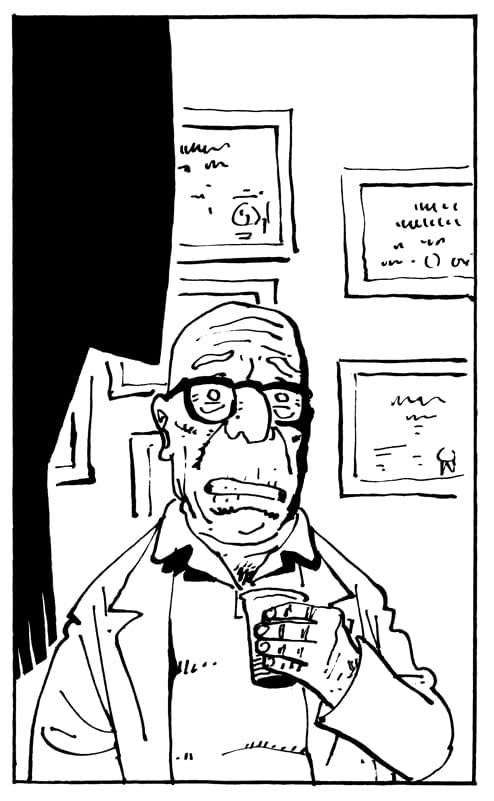
Other than these three characters (of which, for example, Alien's Ellen Ripley was famously originally written for a male actor before Sigourney Weaver stepped up to fill in those space boots) can you give us any other influences that shaped (consciously or subconsciously) Nadja and some other characters we have or haven't met yet?
BD: The thing is, Nadja is a deeply flawed character, so to say that we based her on someone in particular would not necessarily be a very kind thing to say! But I guess like all characters, she is in part based on both Silvija and myself – we drew on more high-minded, innocent, even arrogant sides of ourselves to help draw the character out. That's not to say she's unlikeable, far from it, but her grief brings out what I think is a slightly unpleasant side to her – certainly one that is unwilling to understand or accept the world around her.
Interestingly, there's a scene in the middle of the book where Nadja meets the main bad guy. But we didn't actually write that scene as such – we role-played it, just improvising the scene with me playing Nadja and Silvija playing the bad guy. And it's in the book almost exactly as we role-played it. It was a funny thing to do – particularly as we essentially swapped gender roles to do it – but it worked.
EP: I am very familiar with your previous work, Bob, but for everyone who hasn't had a chance to see it, can you tell us something about the comic book authors that inspire you and your art style?
BS: As a kid I was influenced a lot by French/Belgian artists like Andre Franquin and Raymond Macherot, but also by storytelling and energy of American superhero comic books (especially the ones drawn by Jack Kirby and John Buscema) and, more subtly, Manga because of its movie-like way of telling a story. I like a lot of different stuff: Frank Quitely, Roy Crane, John Romita Jr., Christophe Blain, Basil Wolverton, Paul Grist, Makoto Yukimura, Chris Burnham…
It's not just how they draw, it's their whole attitude towards drawing, how much they put in, the way they tell a story, the composition in the panels, the overall design and graphic quality of the page… My favourite artist of all time is and will always be my late great friend and mentor Eddy Biuković (of Grendel Tales and Human Target fame). The most important thing I learned from him was the whole attitude towards drawing a story – you have to immerse yourself in the material you're drawing, respect the story, build on it as much as you can but never set yourself above it. It's a collaboration, after all.
[A scene from Bob's adaptation of "Worms of the Earth" by Robert E. Howard]
EP: This is the first graphic novel project you've worked on, and Benjamin says you have about a year of work left. How did your approach change to your usual drafting and drawing process?
BS: I don't think I've changed anything in my drafting/drawing process, at least not consciously. I approached it as I would have approached any other comic book job – did a lot of research about the place that the story's set in, about the characters, who I wanted them to be modelled roughly after, clothing styles, type of cars you can see on the street, stuff like that. It just took longer than usual because the project is much bigger than the ones I'm used to.
So there you have it, folks! The Kickstarter campaign for the Unfinished City ends on 23rd April 2014, so make sure to go and pledge your way to some excellent bonus goodies that will be available in March next year.


